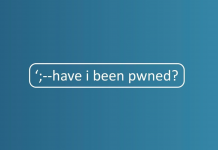
This country is in the midst of a housing crisis — a devastating housing crisis reminiscent of the 1930s — and no one, not the government, not private industry, seems to be able to fix it. Well, there is a strategy out there that has quietly been proposed that could stop the bleeding, and incredibly no one seems to be talking about it. First, let’s set the stage.
Right now, there are reportedly 4.8 million American homes in foreclosure — or close to it — with no end in sight. In fact, housing prices dropped another 3.6% in April 2011 compared to April 2010. Foreclosures are the financial Ebola virus of a modern economy. A foreclosure can destroy the lives of the homeowner and his family, but it doesn’t stop there. Because the virus is so contagious, a foreclosure on a given block immediately lowers the value of every other house on the block, which of course tends to induce more foreclosures. In this way neighborhoods or even towns can be ruined. The recent April housing price figures could signal the much dreaded “double-dip” in the American real estate market, which could seriously slow down or imperil the recovery as a whole.
Realizing the immense magnitude of the problem, the government has tried to help. The T.A.R.P. program was designed to give money to banks which presumably would then lend it out to people who needed it, including homeowners. The government also created a mortgage modification program, but it has been heretofore a dismal failure because it gave the banks — which have the money — little or no incentive to take immediate, upfront losses. This proves once again that what goes around doesn’t necessarily come around.
So is there any mortgage modification design out there that would both enable the homeowner to make affordable payments on a reasonably (and now lower) valued home, AND create a real incentive for banks to implement such a modification program?
My friends, say hello to SAM. I’m talking about neither the piano player in “Casablanca,” nor surface to air missiles. I am talking about the Shared Appreciation Mortgage. You’ve never heard of SAM, eh? As you’ll see if you keep reading, there are many reasons why you don’t know SAM; but I believe you’ll be hearing a great deal about him — I mean it — very soon.
A shared appreciation mortgage is one for which a lender charges the homeowner a lower rate of interest in exchange for a piece of the appreciation in the home when it is eventually sold or refinanced. Very generally speaking, SAM interest rates are fixed, and payments are based on a 30-year amortization schedule, but typically the borrower must sell or refinance within a designated time frame, often 10 years.
SAMs have had a relatively short history in the US. They were first introduced over 30 years ago, as a reaction to the astonishingly high interest rates of the late 1970s and early 1980s. But they never caught on, probably for several reasons, such as the economic reason that 18% interest rates happily didn’t last very long, and for the cultural reason that splitting the gain on your home with the bank seemed somehow un-American.
Recently Fannie Mae, long a major source of liquidity in the secondary mortgage market, has imploded at a cost to the taxpayers of nearly $1 trillion. Few people today remember that Fannie Mae and the whole idea of the 30-year mortgage were themselves brilliant and innovative New Deal responses to the last foreclosure crisis — in the 1930s. They didn’t solve the problem — it took a world war to do that — but they did help, in part by letting people know that the government cared about their problem. But they were great ideas then, not now. In fact I believe that those two ideas, over the course of seven or eight decades, helped create the problem we have today, but I will save that discussion for another day.
The simple point is that we desperately need brilliant and innovative — and different — responses to the current problem whose impact on this generation and the next cannot be understated. And I’m afraid that we need those responses last week.
So I believe that we need SAM to come to the rescue. Some, but not many, economists and academicians have already suggested that SAMs should be used to ameliorate the existing foreclosure problem — and I agree. Although many scenarios are possible, I would recommend that SAMs — let’s call them DistresSAMs — be issued to any homeowner who could demonstrate at least some level of financial responsibility, but who cannot make the payments on a home that is worth less than the current principal amount of the mortgage against it. In such a case, monthly payments would be structured to carry the newly reduced value of the home, but the lender would be entitled to collect most of the original principal amount when the home is sold or eventually refinanced in 10 years, and a piece of any profit as well. This would allow millions of people to stay in their homes, and create a strong incentive for the lender to stay in the game as well.
Assuming that the housing market in the U.S. recovers at some point during the next 10 years (and the jury is still out on that), there might be little or no loss to the lender at all. It’s certainly better than the alternatives that the lender has right now, which are to simply swallow the write-down without foreclosing, or to foreclose into a market where there are precious few buyers. From the standpoint of the homeowner, not only does he or she get to stay in the house, and for a significantly lower monthly payment, but the possibility of an eventual profit still exists.
An additional sweetener could be added to the rescue recipe. After the DistresSAM is put in place, and if timely payments are made for some reasonable period, why not delete from the borrower’s credit report all negative information relating to the now-unnecessary foreclosure proceedings? We as a society recognize that some court records are properly expunged after a period of time, and that some things that happen don’t really relate to the fault of the person to whom they happen. In many states, auto insurance companies don’t consider a collision with a deer to be a chargeable accident. I believe that many of the homes in foreclosure today are owned by people who were really deer in the headlights of the new millennium’s borrowing, lending and spending frenzy.
Of course there is no “one SAM fits all.” That said, we need both government and the financial services industry to start coming up with ways to implement DistresSAMs right now. It may not be easy. The IRS will have to cooperate, financial institutions will need to take steps to create liquidity for these instruments in the secondary market, and underwriting and valuation criteria will have to be accurately developed. I do believe however that all of these things can be done quickly — quickly enough to have a real impact on the current foreclosure crisis before it gets even more out of hand, assuming it hasn’t already.
Some far less tangible things may also have to happen — Americans will need to conceptualize homeownership in a different way than they did before; financiers and government may have to conceptualize the notion of a mortgage very differently than they have for decades.
I also believe that a non-distress SAM might just become a most-requested tune pretty soon, to replace the cacophony of the current situation. But that’s another topic for another day. For now, we must focus on minimizing the misery wrought by the scary din of foreclosure.
Originally posted at Credit.com.










